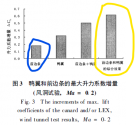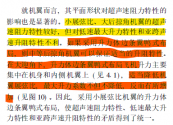eww.... it's like jerking of on old granny photo.I've always suspected the J20 to be a superior aircraft to the F22. The F22 is a 20+ year old airframe, yet yankees are still jerking off to it like it's the single greatest piece of military equipment ever produced. Also, production of F22 stopped while J20 is still receiving iterative upgrades. 'Final form' dual seater J20 with mature WS-15 and loyal wingman drones will only be matched by USAF's 6th gen NGAD.
You are using an out of date browser. It may not display this or other websites correctly.
You should upgrade or use an alternative browser.
You should upgrade or use an alternative browser.
J-20 5th Generation Fighter VII
- Thread starter siegecrossbow
- Start date
- Status
- Not open for further replies.
I don’t think so. It might hold the advantage in instantaneous turn and roll but I don’t think it could beat a Raptor in climb rate or sustained turn. It is a bit like J-10 and F-16.
The perception of J-20's subsonic sustained turn is a complicated matter that can not be simply deducted by comparison between J-10 and F-16.
The argument of J-10 has worse sustained turn rate than F-16 is simple. J-10 has a lower aspect ratio wing than F-16. This is also true to Eurofighter.
However J-20 is a different story. See Song Wencong's paper here.

Firstly J-20's aspect ratio is higher than J-10, similar to but slightly lower than F-22. F-16 is still the highest. This means that J-20 with its wing design is very close or equal to F-22.
Firstly the principle, higher lift-drag better sustained turn. The key is generating lift as much as possible.

J-20 has the canard and LEX combo to generate extra lift whose effect is better than LEX and canard used independently. See following, blue is LEX which F-22 has albeit very small. The yellow is J-20. The difference (increased lift) is huge.

The following says that low AR (aspect ratio) (high swept like J-10 and Eurofighter) wing is bad for subsonic lift-drag. People mistakenly put J-20 in this low AR category. BUT using LEX-canard combo, MIDIUM swept wing (this is J-20) has good lift coefficient and even improved in high AOA.

To conclude, J-20's AR is slightly worse than F-22 but very close, but J-20 has a much better lift generation by the LEX-canard combo which more than compensating the loss in having lower AR. The outcome is likely that J-20 is better than F-22 in sustained turn.
Last edited:
You know, the J-20 is such a brilliant piece of aerodynamic engineering that I have to wonder how much of an RCS hit it took. It just feels wrong that it has this much going for it kinematically and it got away with it for free. That the little public information we have shows that the effect on RCS is very manageable (if not outright negligible) shows the calibre of genius that designed this plane.The perception of J-20's subsonic sustained turn is a complicated matter that can not be simply deducted by comparison between J-10 and F-16.
The argument of J-10 has worse sustained turn rate than F-16 is simple. J-10 has a lower aspect ratio wing than F-16. This is also true to Eurofighter.
However J-20 is a different story. See Song Wencong's paper here.
View attachment 96457
Firstly J-20's aspect ratio is higher than J-10, similar to but slightly lower than F-22. F-16 is still the highest. This means that J-20 with its wing design is very close or equal to F-22.
Firstly the principle, higher lift-drag better sustained turn. The key is generating lift as much as possible.
View attachment 96459
J-20 has the canard and LEX combo to generate extra lift whose effect is better than LEX and canard used independently. See following, blue is LEX which F-22 has albeit very small. The yellow is J-20. The difference (increased lift) is huge.
View attachment 96460
The following says that low AR (aspect ratio) (high swept like J-10 and Eurofighter) wing is bad for subsonic lift-drag. People mistakenly put J-20 in this low AR category. BUT using LEX-canard combo, MIDIUM swept wing (this is J-20) has good lift coefficient and even improved in high AOA.
View attachment 96462
To conclude, J-20's AR is slightly worse than F-22 but very close, but J-20 has a much better lift generation by the LEX-canard combo which more than compensating the loss in having lower AR. The outcome is likely that J-20 is better than F-22 in sustained turn.
The perception of J-20's subsonic sustained turn is a complicated matter that can not be simply deducted by comparison between J-10 and F-16.
The argument of J-10 has worse sustained turn rate than F-16 is simple. J-10 has a lower aspect ratio wing than F-16. This is also true to Eurofighter.
However J-20 is a different story. See Song Wencong's paper here.
View attachment 96457
Firstly J-20's aspect ratio is higher than J-10, similar to but slightly lower than F-22. F-16 is still the highest. This means that J-20 with its wing design is very close or equal to F-22.
Firstly the principle, higher lift-drag better sustained turn. The key is generating lift as much as possible.
View attachment 96459
J-20 has the canard and LEX combo to generate extra lift whose effect is better than LEX and canard used independently. See following, blue is LEX which F-22 has albeit very small. The yellow is J-20. The difference (increased lift) is huge.
View attachment 96460
The following says that low AR (aspect ratio) (high swept like J-10 and Eurofighter) wing is bad for subsonic lift-drag. People mistakenly put J-20 in this low AR category. BUT using LEX-canard combo, MIDIUM swept wing (this is J-20) has good lift coefficient and even improved in high AOA.
View attachment 96462
To conclude, J-20's AR is slightly worse than F-22 but very close, but J-20 has a much better lift generation by the LEX-canard combo which more than compensating the loss in having lower AR. The outcome is likely that J-20 is better than F-22 in sustained turn.
The caveat is that you need to fly at a higher angle of attack to take advantage of the vortex lift. That would slow you down in a turning fight, which admittedly has a very low chance of happening.
I've always suspected the J20 to be a superior aircraft to the F22. The F22 is a 20+ year old airframe, yet yankees are still jerking off to it like it's the single greatest piece of military equipment ever produced.
eww.... it's like jerking of on old granny photo.
Not kool man...
The Raptor dominated the skies for 20 years. That's like twice as long as Jordon and the Bulls. The fact that it's still in the conversation of best fighter today is what makes it a legend.
To be fair to the F-22, its vortex lift mechanism is more sophisticated than just employment of LERXes. It employs a coupling mechanism between the vortex generated from the LERX and a significant upper body camber that creates a low pressure zone which amplifies those vortices significantly.The perception of J-20's subsonic sustained turn is a complicated matter that can not be simply deducted by comparison between J-10 and F-16.
The argument of J-10 has worse sustained turn rate than F-16 is simple. J-10 has a lower aspect ratio wing than F-16. This is also true to Eurofighter.
However J-20 is a different story. See Song Wencong's paper here.
View attachment 96457
Firstly J-20's aspect ratio is higher than J-10, similar to but slightly lower than F-22. F-16 is still the highest. This means that J-20 with its wing design is very close or equal to F-22.
Firstly the principle, higher lift-drag better sustained turn. The key is generating lift as much as possible.
View attachment 96459
J-20 has the canard and LEX combo to generate extra lift whose effect is better than LEX and canard used independently. See following, blue is LEX which F-22 has albeit very small. The yellow is J-20. The difference (increased lift) is huge.
View attachment 96460
The following says that low AR (aspect ratio) (high swept like J-10 and Eurofighter) wing is bad for subsonic lift-drag. People mistakenly put J-20 in this low AR category. BUT using LEX-canard combo, MIDIUM swept wing (this is J-20) has good lift coefficient and even improved in high AOA.
View attachment 96462
To conclude, J-20's AR is slightly worse than F-22 but very close, but J-20 has a much better lift generation by the LEX-canard combo which more than compensating the loss in having lower AR. The outcome is likely that J-20 is better than F-22 in sustained turn.
All turns are done at a pitch angle because the plane needs to bank to execute a turn. We can see this when the F-22 and J-20 turn that the LERXes are engaged and generating vortices.The caveat is that you need to fly at a higher angle of attack to take advantage of the vortex lift. That would slow you down in a turning fight, which admittedly has a very low chance of happening.
Based on something one USN pilot on Reddit said, it seems the US’s own internal assessment from their test models suggests based on the J-20’s shape (and probably some general assumptions about RAM performance) the J-20’s RCS is comparable to early block F-35s. But who knows.You know, the J-20 is such a brilliant piece of aerodynamic engineering that I have to wonder how much of an RCS hit it took. It just feels wrong that it has this much going for it kinematically and it got away with it for free. That the little public information we have shows that the effect on RCS is very manageable (if not outright negligible) shows the calibre of genius that designed this plane.
But FWIW while I think the J-20’s aerodynamic design is quite advanced the F-22’s is no slouch either, and both are probably more comparable than is being suggested in this discussion.
The F22 was undoubtedly in a class of its own in 1997 but has since been surpassed by newer, more advanced tech in the J20.Not kool man...
The Raptor dominated the skies for 20 years. That's like twice as long as Jordon and the Bulls. The fact that it's still in the conversation of best fighter today is what makes it a legend.
F22 has a monstrous T:W ratio still unbeaten to this day. Don't think anything gonna top that till a VCE/ACE engine breakthrough.The F22 was undoubtedly in a class of its own in 1997 but has since been surpassed by newer, more advanced tech in the J20.
If I understand correctly, for sustain turn the sub-sonic lift-drag the higher the better with a powerful enough engine but it's a liability for super-sonic cruise because too much drag.
If F-22 is so good at sustain turn which I believe is better than the gold standard F-16,
how does F-22 overcome the drag and maintain supercruise with only dry thrust?
- Status
- Not open for further replies.
